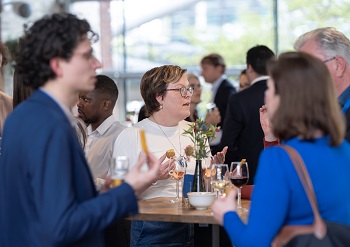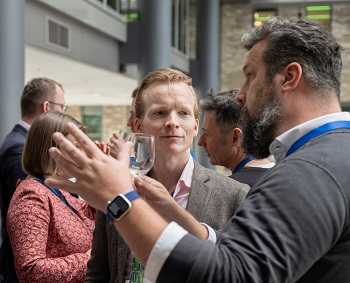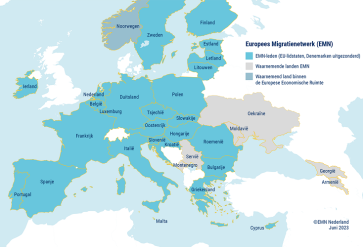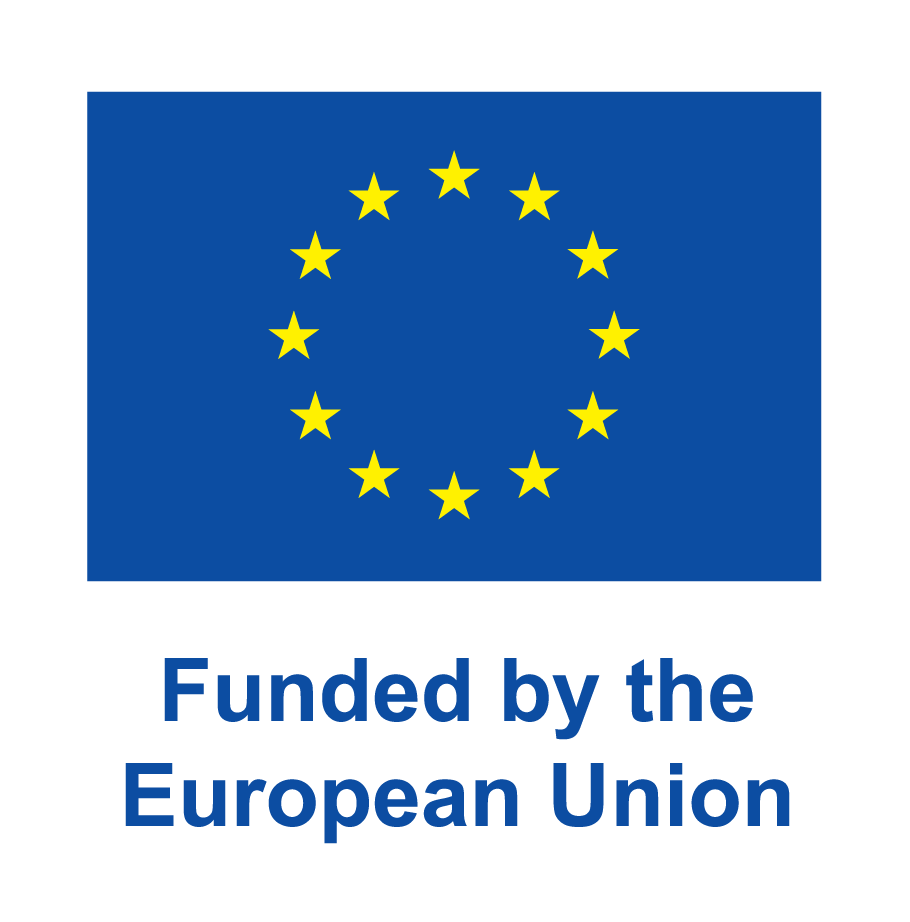At the 13th edition of the annual national conference of EMN Netherlands on 24 April 2024, national and European experts convened to explore their respective countries’ approaches to family reunification procedures for beneficiaries of international protection. Discussions encompassed, amongst others, the provision of evidence to establish family relations and procedures for reunification with children.
> Links to the presentations are included in the report below
Report conference 24 April 2024: ‘Family reunification for beneficiaries of international protection in the Netherlands and Europe’
EMN Netherlands organised this conference, held at the NH Hotel in The Hague, in cooperation with EMN Bel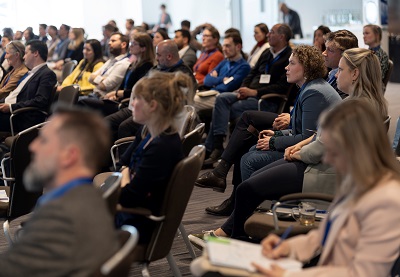 gium. Over 100 participants from a variety of countries, such as Germany, Ireland, Slovakia, Italy, Finland, Belgium, attended the conference. The audience consisted of a diverse group of practitioners and specialists, including government officials, legal experts, migration professionals, lawyers, academic researchers, students and journalists. The conference was moderated by Bahram Sadeghi.
gium. Over 100 participants from a variety of countries, such as Germany, Ireland, Slovakia, Italy, Finland, Belgium, attended the conference. The audience consisted of a diverse group of practitioners and specialists, including government officials, legal experts, migration professionals, lawyers, academic researchers, students and journalists. The conference was moderated by Bahram Sadeghi.
Opening
In his opening speech, Jan Willem Schaper, Deputy Director-General (DG) of Strategy, Implementation Policy and Legal Affairs at the Immigration and Naturalisation Service (IND), stressed that migration crosses borders and that international cooperation is important, as is the exchange of knowledge and expertise. "The European Migration Network is an important instrument for gaining valuable insights," he added. Jan Willem Schaper further stated that being able to bring their family to the country where they have found protection 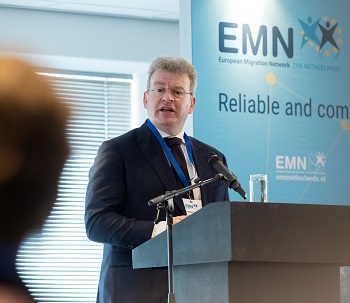 is of crucial importance for the well-being of beneficiaries of international protection, and that, unfortunately, at present in the Netherlands, as in other countries, they have to wait a long time before they are able to reunite with their families. "We are keen to learn from the experiences of other EU Member States," he concluded. "We all have our own unique perspective. Let’s use this opportunity to frankly and openly discuss the dilemmas and experiences we have on the topic at hand."
is of crucial importance for the well-being of beneficiaries of international protection, and that, unfortunately, at present in the Netherlands, as in other countries, they have to wait a long time before they are able to reunite with their families. "We are keen to learn from the experiences of other EU Member States," he concluded. "We all have our own unique perspective. Let’s use this opportunity to frankly and openly discuss the dilemmas and experiences we have on the topic at hand."
Presentation EMN Study ’Family reunification for beneficiaries of international protection’
Pepijn Roos, Researcher at EMN Netherlands, and Christophe Van Hemelryck, Policy Officer at EMN Belgium, alternately presented the key findings of the EMN Study on family reunification for beneficiaries of international protection. During their presentation differences per country in eligible statuses, applicants, time limits, proof of family ties and reunification with dependent adult children and minors coming of age were discussed. The topic of so-called ‘nareis op nareis’ was r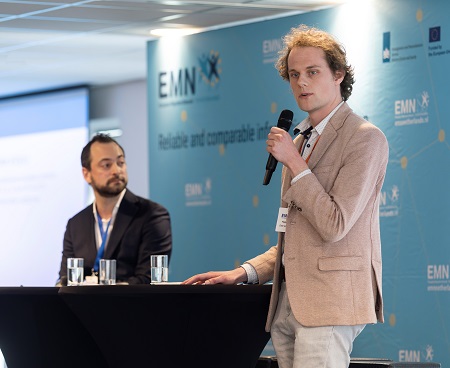 aised by someone in the audience. Roos explained this Dutch term as a form of successive family reunification: an asylum status holder applies for family reunification for his or her family member and, subsequently, the family member applies for family reunification with other family members. Van Hemelryck stated that the research did not look into this specific topic, but that detailed information per country can be consulted in the full report of the research.
aised by someone in the audience. Roos explained this Dutch term as a form of successive family reunification: an asylum status holder applies for family reunification for his or her family member and, subsequently, the family member applies for family reunification with other family members. Van Hemelryck stated that the research did not look into this specific topic, but that detailed information per country can be consulted in the full report of the research.
Case studies from Italy, Belgium and the Netherlands
Speakers from 3 countries (Italy, Belgium and the Netherlands) presented their national approaches to submitting the application for family reunification for beneficiaries of international protection. These countries acknowledged that there were pros and cons to their different practices.
Mariella De Santis, Social Work Methodologist and Policy Office at the Central Directorate for Migration Policies of the Italian Ministry of the Interior, explained the panorama of Italian procedures. During her presentation she highlighted that in Italy the procedure for the submission of documentation is telematic (a combination of telecommunication and informatics, which allows for the transmission and reception of data from multiple devices, such as mobile phones, moving throughout the world).
The next speaker, Sulejman Imsirpasic, Senior Migration Officer at the Asylum and Protection D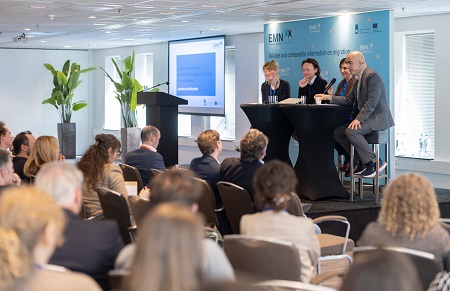 epartment of the Dutch IND, discussed the application process for family reunification in the Netherlands in his presentation, adding that sometimes the formal procedures can differ from the experience in the field. He then explained the pros and cons of application by the sponsor (the asylum status holder) and/or by family members abroad, stating that in the Netherlands, the majority of applications are done by the sponsor.
epartment of the Dutch IND, discussed the application process for family reunification in the Netherlands in his presentation, adding that sometimes the formal procedures can differ from the experience in the field. He then explained the pros and cons of application by the sponsor (the asylum status holder) and/or by family members abroad, stating that in the Netherlands, the majority of applications are done by the sponsor.
Finally, Astrid Declercq, who works for Myria, the Belgian Federal Migration Centre, started her presentation by stressing the importance of a transparent procedure for submission. She explained that appearing in person is decisive for a timely submission in Belgium. In practice, however, meeting the stated deadlines is difficult, due to, for example, dangerous travel routes, exit requirements in home countries and/or visa requirements for other countries on the travel route.
After the presentations, the audience responded with a variety of questions for all speakers. One of the questions posed to Mariella De Santis concerned the ‘telematic application’ in Italy. Mariella De Santis explained that the so-called Sportello Unico per l'Immigrazione (S.U.I.) is a ‘one-stop-shop’ responsible for issuing family reunification permission, following the submission of the required documents. This application is done via a telematic system (see definition above), and within 90 days the S.U.I. decides whether or not an applicant can stay to complete the procedure.
Interlude: France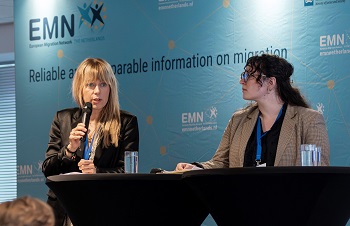
After the break, Tamara Buschek, Senior Policy Officer at EMN France, provided a comprehensive overview of the submission, processing, and examination procedures for family reunification applications in France, including those involving children. In her presentation, she highlighted a notable distinction from other countries: in France, unmarried children can qualify for family reunification until they reach the age of 19, a contrast to the standard age limit of 18 in most EU Member States. Additionally, she shared statistical insights, revealing significant increases in visa issuance to family members of international protection beneficiaries, with a notable surge of 16% in 2021 and a 127% rise in 2022 compared to figures from 2019. Notably, Afghan nationals emerged as the predominant beneficiaries, leading the list of top 10 nationalities granted family reunification in France in 2022 and 2023.
Constance Lucas, Deputy Head of the Family Reunification Unit at the French Ministry of the Interior and Overseas, delved into the nuances of issuing residence permits for family members of international protection beneficiaries, offering detailed insights into the process. She also shed light on the ongoing digitalisation efforts related to residence permits.
Interactive session: the provision of evidence to establish family relations, examples from a new approach
Bahram Sadeghi lead the audience through a series of statements and questions (the so-called ‘Mentimeter’), assessing their knowledge on the topic of family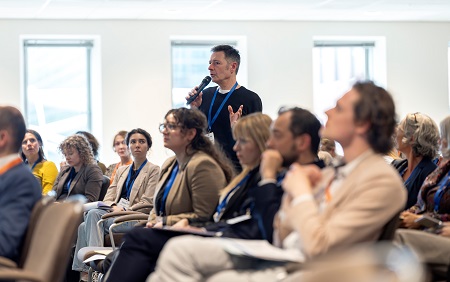 reunification for beneficiaries of international protection in general and the provision of evidence to prove family ties in particular. He discussed the correct answers with Jeske Marijnissen, Senior Migration Officer at the Asylum and Protection Department of the Dutch IND.
reunification for beneficiaries of international protection in general and the provision of evidence to prove family ties in particular. He discussed the correct answers with Jeske Marijnissen, Senior Migration Officer at the Asylum and Protection Department of the Dutch IND.
Jeske Marijnissen followed with a presentation showcasing practical experiences on the provision of evidence to establish family relationships in the Netherlands. She explained that in 2022 the court decided that assessments had to be modified drastically. Since then, assessments are ‘integral’, i.e. based on a set number of factors: documents, explanations, age and gender, circumstances of the sponsor and family members, circumstances in the country of origin and contra-indications. Marijnissen concluded with an example case in which all the documents were valid, but the content of the application was false, showing the complexity of the work.
Expert panel ‘Children within the family reunification procedure for beneficiaries of international protection’
The concluding panel discussion was opened by Hans Lemmens, coordinator of EMN Netherlands, who invited guest speakers Misha Jans, Protection Associate at UNHCR NL, and Mark Klaassen, Assistant Professor at the Europa Institute, Leiden University, on stage. Three statements were posed, on which the speakers were asked to respond or share their views.
1 | ‘The definition of 'family' in the procedure for family reunification for beneficiaries of international protection provides enough room to ensure the family life of children’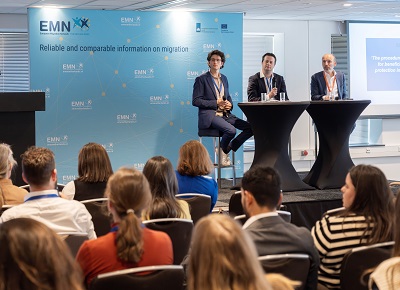
The panel members agreed with the statement, to which Klaassen added that in the Family Reunification Directive (FRD) the definition of ‘family’ is rather broad. The problem, he stated, is not the definition in the FRD, but the implementation and application in the Member States. Jans stressed that the starting point of the discussion should be that family reunification is a right for refugees. Therefore, in his view, for refugee families to benefit from that right, a more flexible definition is needed, and cultural aspects should be taken into consideration, as should the huge impact that flight and conflict have on family life.
Lemmens intervened by asking if this is legally possible, if in practice this kind of flexibility can be applied? Jans responded by stating that UNHCR considers it recommendable to look at ‘dependency’ as a main factor, not because it is necessarily easier, but because it is more reflective of the reality of conflict. Klaassen added that: ‘A balance between efficiency and flexibility is important’.
One of the remarks from the audience concerned the definition of family, and how it might differ in the countries of origin of the applicant, mentioning the example of Somalia, where family might be understood in a wider sense than in the Netherlands. Klaassen replied by stating that for all family members that are not included in the FRD, an evaluation should be made on a case by case basis. Another question from the audience concerned the Dutch procedure for queer people, stating that sometimes the situation is the other way around, and the definition of family is broader in the country in which the sponsor resides than in the country of origin. To which Jans responded that the definition should indeed be flexible enough to encompass varying family compositions. He stated that, on this matter, there is a lot of flexibility in the Netherlands. Klaassen added that indeed the Netherlands has a long tradition of family reunification for unmarried partners.
2 | ‘Age limits in family reunification guidelines provide sufficient safeguards for the family reunification of children of sponsors and unaccompanied minors’
The panel members agreed that, since the court decided that the relevant date for family reunification is the date of application for asylum, an important step forward was made, which put the rights of children first.
Klaassen emphasized the importance of an inclusive definition of the family for young adults. Turning 18, he said, does not equal not being part of a family anymore. Family reunification is a human right, and it remains so after you turn 18. Jans agreed, stressing once again that he thinks the starting point should always be that family reunification is a human right. He considers it recommendable not to look at the age, but at dependency.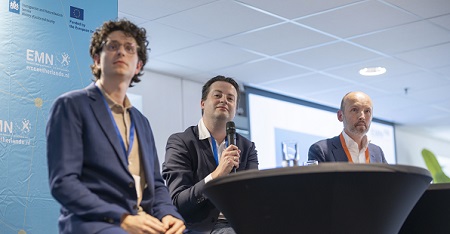
3 | The procedure for family reunification for beneficiaries of international protection involving children is too complex
The panel members both nuanced the statement. Klaassen stated that for anyone who is well documented and has access to embassies, the procedure is not complicated. For beneficiaries of international protection, however, this is often not the case. When there are no legal obstacles to realize family reunification, practical barriers can stand in the way. Jans stressed that there are two perspectives: is it complicated for the governments or for the applicants? It is important, he said, to include the experiences of refugees themselves in this statement. In addition, UNHCR has published recommendations for flexible approaches to family reunification procedures in Europe aimed to help governments in reunifying refugee families.
A nuancing remark from the audience concerned the welfare of children. ‘I remind myself every day,’ a migration professional from Ireland stated, ‘that I am moving children from one part of the world to another.’ She stressed that it should not be assumed that reunification is always in the best interest of the child. Sometimes the best interest of the child is not to bring them here. It should be taken into consideration that moving from one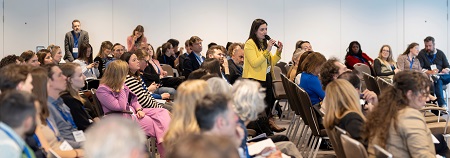 country to another can be very difficult as well. Jans agreed and added that family reunification does not end at the moment of reunification. Support afterwards is very important.
country to another can be very difficult as well. Jans agreed and added that family reunification does not end at the moment of reunification. Support afterwards is very important.
Klaassen concluded with a call to action in relation to the long processing times for family reunification for beneficiaries of international protection in the Netherlands. He stated that, in the past, processing times were also extremely long for regular migration. A modernization of the Migration Act made everything much more efficient. This is, he concluded, the way in which this urgent matter should be addressed for family reunification for beneficiaries of international protection as well.
Closing remarks
Hans Lemmens concluded the conference by sharing his take outs. Summarizing, he stated that the law is complicated and nuanced. Sometimes case law makes things more complex and sometimes it makes things clearer. In the European Union, this conference has shown , similarities might predominate, but differences can be substantial. In conclusion, Lemmens stressed that family reunification has a big impact on people’s lives. ‘People,’ he said, ‘want to go on and live their lives. And it is clear, fortunately, that everyone here is very well aware of that.’
, similarities might predominate, but differences can be substantial. In conclusion, Lemmens stressed that family reunification has a big impact on people’s lives. ‘People,’ he said, ‘want to go on and live their lives. And it is clear, fortunately, that everyone here is very well aware of that.’
All photo's: Victor van der Griendt
